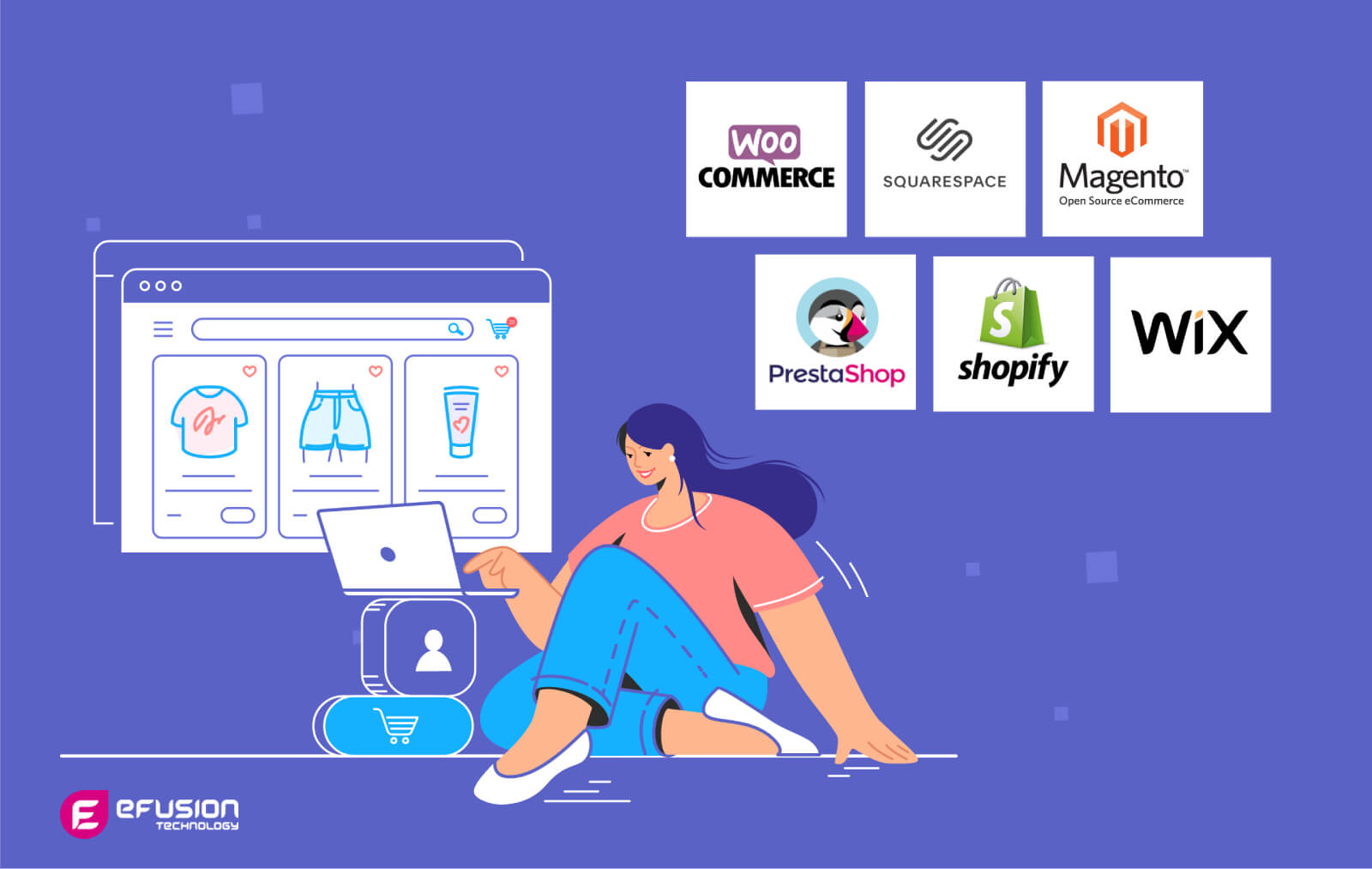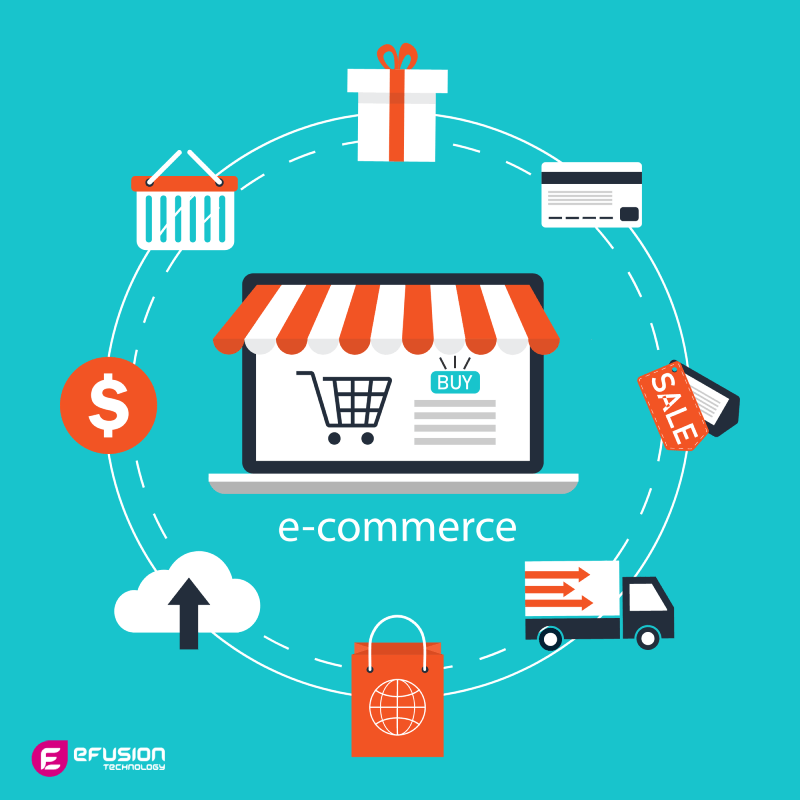
It’s no question today whether a retail owner should have an online store. The e-commerce market in Singapore is projected to be worth US$7.29b by 2022. Instead businesses should be asking how they can have a stake in the burgeoning e-commerce market.
Thankfully the numerous e-commerce platforms available today lets a business owner pick and choose one that best fits their needs.
Some e-commerce platforms are all-inclusive, quick to set up and work on a monthly subscription model like Shopify. Whereas there are free, open-source e-commerce platforms but require you to buy your own hosting and domain. An example of the latter is PrestaShop.
Here is a quick overview of the top e-commerce platforms in the market today:
| Platform | Pricing | Total Online Stores | Limitations |
 |
FREE | 2,906,789+ | Has to be installed as a plugin on WordPress; cannot work on its own. May also need to install additional plugins for payments, product filter, wishlist etc. |
 |
From USD23/month | 335,828+ | Some e-commerce functions like discounts and shipping depends on pricing plan and available to US customers only |
 |
From USD29/month | 1,700,000+ | Availability of certain e-commerce functions depend on pricing plan
Full analysis will be covered in part 2 of this article series |
 |
FREE | 707,194+ | Needs own hosting & domain
Full analysis will be covered in part 2 of this article series |
 |
FREE | 203,021+ | Needs own hosting & domain, Has security concerns |
 |
From USD17/month | 1,548,864+ | Availability of certain e-commerce functions depend on pricing plan |
Not all e-commerce platforms are made equal. There are mainly two types of e-commerce platforms; free open-source ones and paid subscriptions.
Those that are open-source are maintained by a community of developers. As such there is no dedicated support for it aside from user forums and the developer community.
The paid ones typically have extra features like default hosting and domain but have recurring payments that could add up over time.
Even amongst the open-source and paid e-commerce platforms, some features are offered for free on one platform but could only be achieved through additional plugins on another platform.
Also worth noting is that even though WooCommerce has the highest number of users, it is actually not a standalone e-commerce platform but a plugin to WordPress. As WordPress is not a native e-commerce platform but a blogging site, WooCommerce actually requires additional plugins to be installed to achieve the basic functionality of an e-commerce site.
Hence you will end up maintaining not just the WordPress updates but also WooCommerce and its associated plugins.
If you are new to the e-commerce market, it can be overwhelming to narrow down the perfect option for your business. Should you go with open-source or paid subscription? You need to research and carefully consider your options to avoid costly mistakes.
Going for a platform just because it is widely-used could be a wrong move. You have to consider whether the functions offered by them are the right fit for your business. Not to mention your budget which could be the major factor in your consideration.
In the first part of this e-commerce article series, we will help you to shortlist your top priorities when selecting an e-commerce platform.
Next week, we will analyse further the comparisons between the Shopify and PrestaShop e-commerce platforms as they are amongst the top e-commerce platforms among businesses for different reasons.
3 main questions to ask when choosing your e-commerce platform

Step 1: What is your scale of business?
The size of your business plays a rather significant factor in determining your e-commerce platform.
For a small business owner with only a couple of products, going for the cheapest package with ready-made templates on an e-commerce platform like Shopify might be the obvious choice.
A larger enterprise with an even larger budget might choose to go for an e-commerce platform that allows more flexibility in customization like PrestaShop.
Then you also have to consider how to attract and retain customers to your e-store. Are you already an established brand with a loyal customer base?
If you need help in boosting the visibility of your e-commerce website, search engine optimization (SEO) is important. Some e-commerce platforms have less flexibility in the way you structure your SEO and require an additional plugin.So you might end up paying more for a basic functionality that is offered for free by another e-commerce platform.
Some e-commerce platforms also allow you to easily manage email marketing within the same platform.
Step 2: What is the purpose of your e-commerce store?
Certain brands operate solely online which would make their e-store the only point of contact where their customers could purchase their products. Others use their e-store as an extension of their brick-and-mortar stores.
There are also some brands who use their e-store more as a catalogue for customers to browse their product range and the actual purchase happens only offline.
Another consideration is whether the products in your e-store will be sold to only local customers or overseas customers too. An e-commerce platform should allow you to set foreign currencies and international shipping easily if you opt for the latter.
Determining the purpose of your e-commerce store early on helps you narrow down the main functions you need from the e-commerce platform. Although you could switch to a different e-commerce platform if you have other plans for your e-store in the future, the migration could be costly and tedious.
Step 3: Do you have technical expertise?
Managing an e-commerce store takes time and effort. If you have a dedicated IT team to handle the technical aspects of the e-store then you could afford to have more fancier customizations to the e-store.
However if your team’s sole focus is on just managing the orders then you might want to opt for an e-commerce platform that is simpler to handle.
For any websites including e-commerce stores, you have to consider how you would manage the web hosting and domain too.
Web hosting is the server space where your website files are stored and makes your website accessible on the Internet. Web domain is the name of your website that usually comes after ‘www’.
Businesses who do not have a technical team might want to opt for an e-commerce platform that already has the hosting and domain included like Shopify.
Other e-commerce platforms like PrestaShop require you to buy your own hosting and domain. You might need to hire a web developer to do the initial setup and routine maintenance.
Technical issues will happen from time to time. An advantage of having your own technical team is that they are readily available to support your e-commerce store. Otherwise you have to go through an e-commerce platform’s technical support channels which could be frustrating especially when time is crucial and they might not be familiar with your business operations.
It is worth taking your time to deliberate on the above factors as it will help you to align your e-commerce store with your business goals and craft out your budget. With a clear purpose, your e-commerce store will surely be a success.
For more help you can check out this article on what makes a great e-commerce website.
Next month we will dive deep into the comparisons between Shopify, a paid monthly subscription e-commerce platform and PrestaShop that is free and open-source. You might be surprised that a certain e-commerce platform you had not considered might actually be better suited for your business.
Still unsure of how to proceed with opening your own e-commerce store? Why not let the professionals guide you through the process. Contact eFusion Technology at (65) 6292 3086 if you’re looking for assistance with website funding grants, or need some advice on web development and IT solution services.

